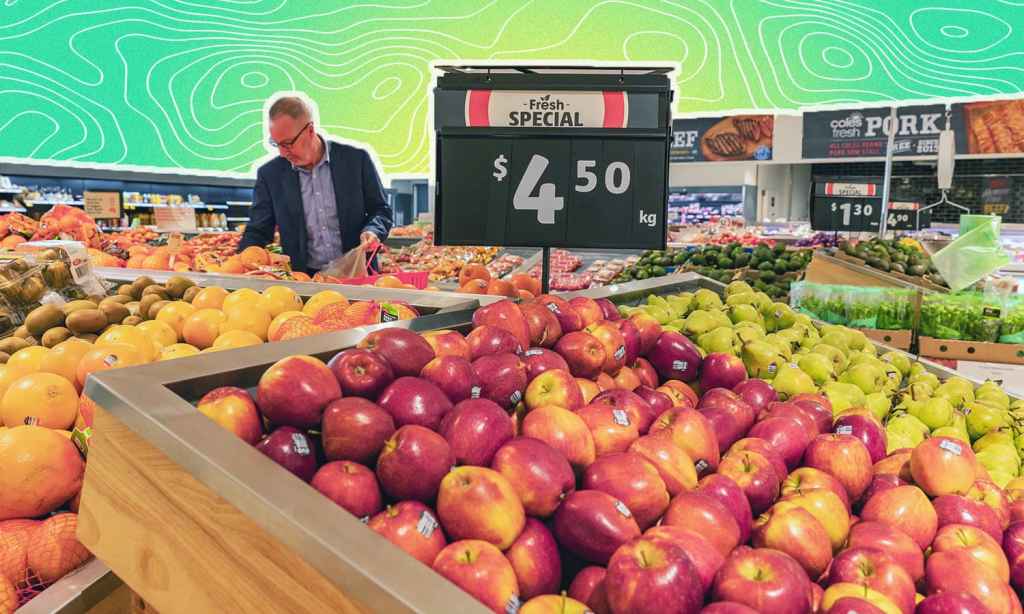Australia, our island home ‘girt’ by sea, has become pretty good at sustaining itself in terms of actual human sustenance. In fact, we’re one of the world’s top food exporters, selling around 70% of everything we grow here to other countries.
At the same time, we also import a fair bit of the stuff we consume too. Coffee, chocolate, and processed food and vegetables are imported due to the nature of the global market and the environment we have for growing specific goods.
So, if we’re selling the vast majority of what we actually make here, doesn’t that mean we should be able to turn that export tap down and start reaping the low-cost benefits at the supermarket? Well, it doesn’t quite work like that. Here’s why.
Where Australia Gets Its Food From
As above, Australia has a solid history of being self-sustaining. After all, it’s tricky to get fresh produce from overseas and we have a vast landscape of usable land for farming at home.
Exact figures for just how much of the food produced in Australia we consume are hard to come by. According to the Department for Agriculture, “The overwhelming majority of food sold in Australia is grown and supplied by Australian farmers”.
However, this relates only to certain categories of food. For example, 90% of fresh fruit and vegetables, meat, milk and eggs sold in supermarkets are domestically produced. At the same time, Australia imports more of its alcohol, seafood, and processed foods than it creates.
In total, we export more than we import, but we still import a lot. For example, from our largest food supplier, New Zealand, we bought $3.4 million worth of fresh and frozen seafood in 2017. In the same year, we bought $20 million worth of processed foods including meat, fruit and vegetables, and sugar from the US.
Why Is Food So Expensive?
Partially because we are so self-reliant when it comes to food, we also suffer the consequences when those supplies fail.
Earlier this year, much of the east coast of Australia was hit with successive flooding of biblical proportions. A lot of that water was dumped on farmlands, ruining crops and causing food shortages that are expected to continue throughout the rest of the year. Food storage warehouses were also affected.
Natural disasters like this expose the “risky” nature of our food supply chains. According to experts, we rely too heavily on large industrial farming hemmed in by limited road infrastructure. Given that the climate is only going to make food security worse, recommendations have been made to increase our food sources from both the international market and from smaller domestic farms.
Why It Won’t Get Cheaper Anytime Soon
The war in Ukraine, the pandemic, and climate change are three major factors that have caused food prices to rise, not just in Australia but across the world.
However, Australian government policy is also a major factor in why things won’t get cheaper any time soon. Agriculture is a huge part of our economy, creating around $64 billion in value from the produce we create each year. Because government policy is to expand that production, mainly for export, a lot of what we do grow has already been spoken for as to where it ends up.
It might sound short-sighted, but this is how many of us earn a living. One in seven of us are employed in farming-related industries while a third of our manufacturing jobs are in food and drink processing.
Because Australia does not have a large enough market to switch to domestic supply and keep those people employed and well paid, we have to sell much of what we grow, leaving us at the whims of the global market and the environment. Selling more of what we make on the cheap at home would simply bankrupt many in the domestic agricultural industry.
Basically, the good-old laws of capitalism are keeping food prices high at home, and this is not something that’s likely to change any time soon. Where there is a demand, there is a supplier waiting in the wings and, increasingly, we’re hoping to be that supplier. For example, when the conflict in Ukraine — ‘Europe’s breadbasket’ — broke out, the Australian wheat industry saw an opportunity to swoop in and fill the gaps left by the disruption to Ukrainian exports and profit off of higher global prices.
Unfortunately, it’s simply more valuable, although less sustainable, in the long run for us to keep sending what we produce abroad than it is to sell it at a loss here.
Related: Australia Doesn’t Buy Petrol From Russia, So Why Are We Paying So Much for Fuel?
Related: The National Shopping List: Here’s Everything Australia Is Short of Right Now
Read more stories from The Latch and subscribe to our email newsletter.







